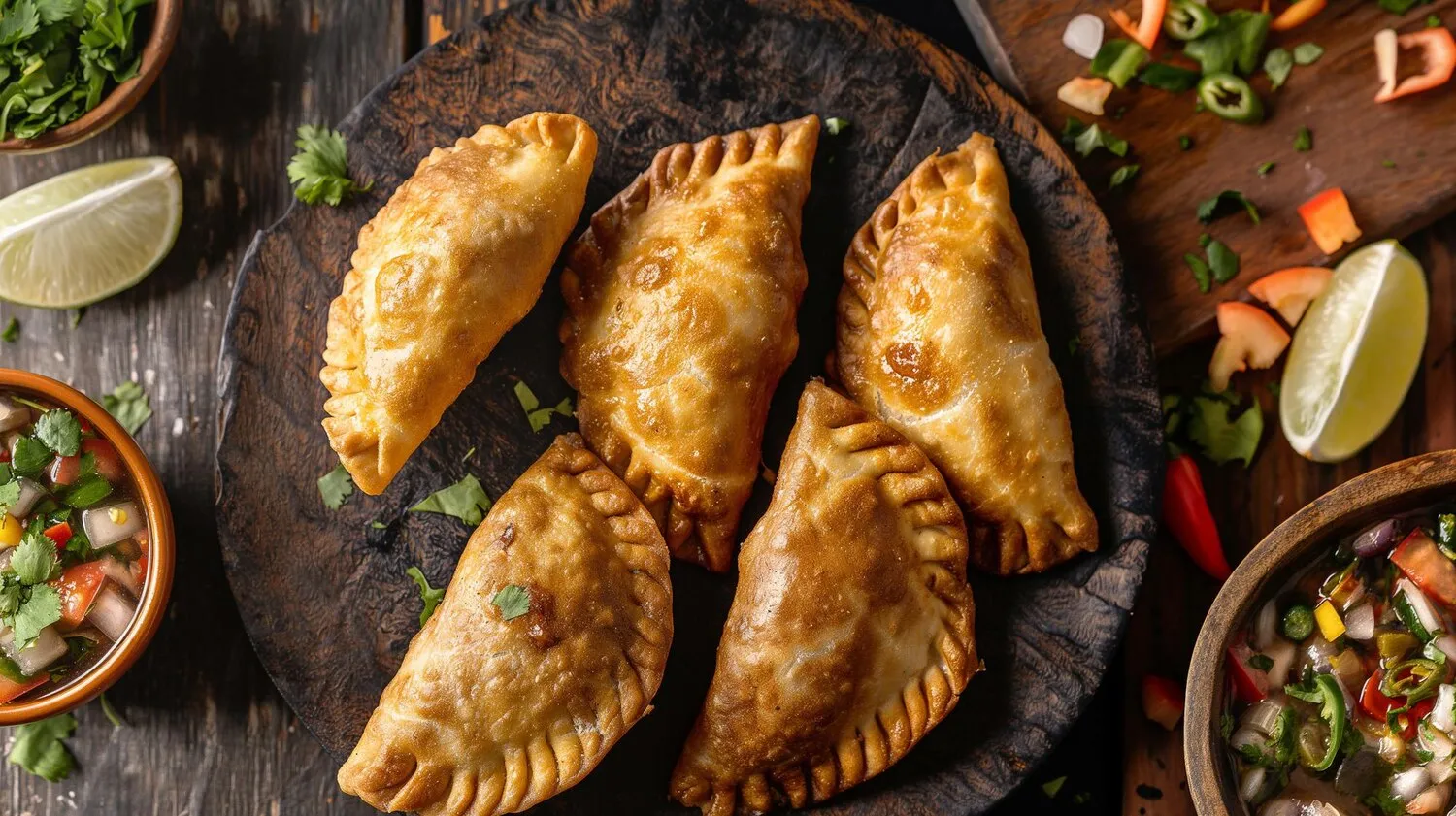
Empanadas
Venezuelan Empanadas. A fried pastry filled with various ingredients.
Nutrition Facts
* The % Daily Value (DV) tells you how much a nutrient in a serving of food contributes to a daily diet. 2,000 calories a day is used for general nutrition advice.
Rincon del pan
Empanadas trace their roots back to Galicia, Spain, influenced by the Moorish presence in the Iberian Peninsula. The idea of encasing food in dough for preservation and portability has existed for centuries across various cultures, and the Spanish adapted and popularized it in their own unique way.
Empanadas are deeply ingrained in Spanish and Latin American cultures, representing comfort food, family traditions, and a shared culinary heritage. They are often enjoyed during celebrations, festivals, and as everyday snacks.
Family Gatherings
Empanadas are often prepared in large batches during family gatherings and holidays, with each family having their own cherished recipe passed down through generations.
Street Food
Empanadas are popular street food items throughout Latin America, sold from food carts and stalls, offering a quick and delicious meal on the go.
Regional Variations
Each country and region has its own unique empanada variations, reflecting local ingredients and culinary traditions. For example, Chilean empanadas are often filled with 'pino' (ground beef, onions, raisins, and olives), while Argentinian empanadas can be baked or fried and may contain various meats and spices.
Empanadas offer a diverse range of flavors depending on the filling, from savory meats and cheeses to sweet fruits and creams. Common flavors include savory, rich, tangy, spicy, and sweet.
Savory empanadas often feature fillings like ground beef seasoned with cumin, paprika, and onions; shredded chicken with peppers and olives; or cheese blends like mozzarella and provolone. Spicy variations may include chilies or chorizo. Vegetarian options can incorporate spinach, corn, and cheese. Sweet empanadas usually contain fruit fillings like apple, guava, or dulce de leche, often flavored with cinnamon.
Dough Consistency
The dough should be pliable and easy to work with, not too sticky or too dry. Resting the dough in the refrigerator for at least 30 minutes before rolling it out helps relax the gluten and makes it easier to handle.
Preventing Leaks
Seal the edges of the empanadas tightly to prevent the filling from leaking out during baking or frying. Crimp the edges with a fork or use a decorative empanada press.
Baking vs. Frying
Baking empanadas results in a lighter, healthier option, while frying creates a crispy, golden-brown crust. Adjust the baking time or frying temperature to achieve the desired level of doneness.
Filling Moisture
Make sure the filling is not too moist, as this can make the dough soggy. Drain any excess liquid from the filling before assembling the empanadas.
Explore additional Venezuelan Street Food dishes and restaurants
Explore Venezuelan Street FoodDiscover top dining spots and culinary experiences in Santa Cruz de Tenerife.
Explore Santa Cruz de TenerifeLearn more about the food culture, restaurant scene, and culinary heritage of Spain.
Explore Spain